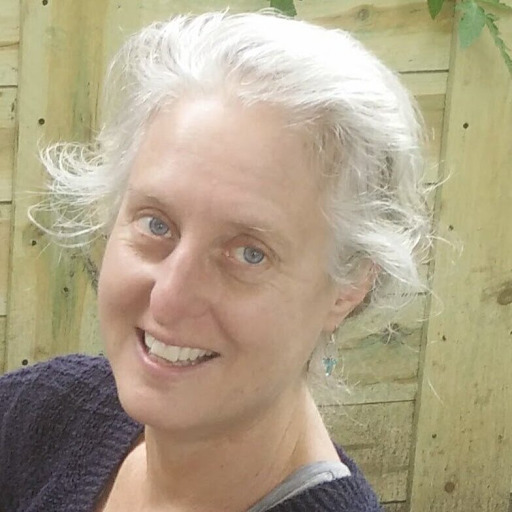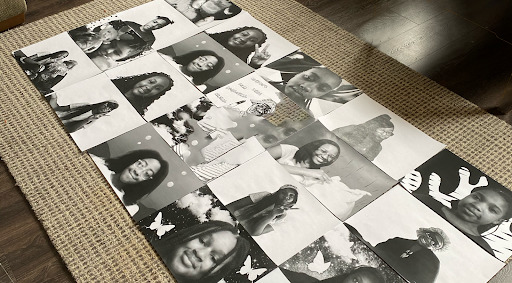In 2021, educators from throughout the United States of America were invited to participate in the Maker Learning @ Home cohort, a six-month professional learning experience for educators committed to continuing opportunities for making while learners are at home.
Throughout their work, cohort members documented the planning, design, and implementation of their projects, as well as offering reflections and lessons learned.
Lisa Simon is an educator, writer, artist, and activist living in Wilkinsburg, Pennsylvania. Lisa has more than 20 years of experience working and learning as a teacher with children, youth, families, and adults.
She has been a teacher in Kelly Primary’s afterschool, the garden coordinator for the Wilkinsburg Youth Project, and the Creative Education specialist for the Pittsburgh Center for Creative Reuse. She is also the coordinator of Small Victories Garden and on the board of the East End Food Co-op Federal Credit Union.

This case study describes a project where a group of adult, high school, and elementary school artists collaborated across age, space, and digital platforms to dream a wheat paste mural into our futures.
The Dreaming Ourselves into the Future project emerged from the winter depths of a pandemic that had a grip on us for more than a year—a year when, to keep ourselves and each other safe, we had to keep our distance. For all of us, teachers, teenagers, and elementary artists, this was also a year when online video meeting platforms—screens framed by wide black borders and filled with rectangular boxes around the faces (or just names) of family, friends, teachers, and classmates—took up a lot of space in our lives.
Throughout it all, we continued to make art. On our own, on and off screens, we created—designing, drawing, painting, building, and crafting in the spaces we lived in and shared.
But the losses and stress of this year touched us all. Many of us felt isolated and lonely, drained by the screen time demanded of us. We started to lose touch with the immediacy and the power of material/analog dimensions. Sometimes working on screens just felt easier.
This project was designed to provide opportunities for young, individual artists to connect our independent art-making at home. Drawing upon networks of artists, wisdom, community, and resources, this project created a space where Pittsburgh artists collaborated across age and neighborhood to make art, alone and together. Together, we dreamed ourselves into a future we could imagine but not predict. One of the results: a wheat paste mural bigger than the sum of its parts. Each participant had the opportunity to take a portrait, embellish it, and wheat paste it as part of the collective mural.
Many young people in our town are deeply committed to creating art. At home, many children and teens were working on their own on self-designed art projects and on expanding their skills via tutorials on YouTube and TikTok.
The inspiration for this project was a desire to increase the opportunities for artists of all ages to connect and work with one other. Wilkinsburg public schools had been digital-only from March 2020 through April 2021. Unfortunately, this shift also resulted in students having limited art opportunities.
Collaboration was a strong feature of this project. The teaching artists facilitating the project were aware that, after a year of digital learning and social distancing, all of the artists felt isolated and lonely. In designing the curriculum for this project, we sought to provide many opportunities for the young artists to collaborate and share with one other and with the facilitators across age and neighborhood boundaries. Throughout the entire project, it was evident that the cross-age collaborations were very meaningful to the artists. One of the joys of the project was getting to watch the teens design the backgrounds for the younger students, many of whom they had known since childhood but not seen for more than a year.
Strangely, it wasn’t until the end of the project that the adult facilitators realized how meaningful the collaboration had been for them as well. Like the younger artists, we too had spent a year in isolation, working on individual projects in digital spaces and with too few opportunities to work with others in ways that were creative, exciting, and meaningful.
An additional dimension of collaboration was the way this project encouraged unexpected connections and collaborations. Pittsburgh Learning Commons developed a stronger relationship with Turner Elementary, and we were able to sketch out ways we can continue our collaboration. Our relationships with the families and youth involved in the mural also strengthened along with our connections to key local organizations and educators who contributed resources.
It is hard to imagine this project having the same power or joy without the web of collaboration that sustained it.

Wheat Paste Mural
Each artist chose to participate in the project.
Pittsburgh Learning Commons hosted two Dreaming Ourselves into the Future celebrations to wrap up the project. The first occurred online after everyone’s embellished portraits had been picked up. When we picked up the portraits, we had given them snacks for this party. We met, talked about how the project had worked, what people liked, and ideas for improvement. Then we played a few games as a group.
Our second celebration was in person when we wheat-pasted the mural. That event was at the Pittsburgh Learning Commons facility. Additionally, many of our community contributors were there, as were some family members and children from the neighborhood. We provided pizza, drinks, and snacks after we finished the wheat pasting. Then we took many group photos of the completed mural and took everyone home.
More than any other factor, networks, collaborations, and partnerships, made this project as successful as it was. Partnerships were embedded in the design from the beginning with the vision of the project emphasizing connecting the elementary artist cohort with the teen artist cohort and the adult artists with all the participants. Collaboration happened on every level – from teachers weekly planning meetings to the teens helping the younger artists design their backgrounds. And through this project networks were expanded and strengthened.
The Digital Promise funding was grounded in a thoughtful and supportive partnership. The regular check-ins with DP staff were a delightful enhancement of the work on the project. Most importantly, DP staff encouraged responsive funding allowing funds to be used not only for materials but to compensate the time the teaching artists gave to this project. This served to sustain and honor the extra hours the teachers contributed and led to very high quality results. It also strengthened the overall relationships and the networks.
Before, during, and after the mural project, participants were involved in personal art making, working on this in their free time. What the mural project provided that was new were regular, ongoing opportunities to work alongside others engaged in art making and to share ideas with these peers. Participants got to work together across age and cohort groups, composing backgrounds, sharing their process, getting feedback and inspiration. The benefit of this seems to be reflected in the youth’s reflections at the end of the project of what they had enjoyed:“that we all came together and made it” “I loved that we still got a chance to connect with new people during a time where we are fairly isolated.” “This helped me get better at painting”
Producing and wheatpasting 2 murals had challenging moments but they were always overcome by the goodwill, generosity, and flexibility of all involved. When one of our murals was included in the Faces exhibit in the Children’s Museum of Pittsburgh (Grable Gallery), we fully believed we would also be able to coordinate a trip for most of the artists to see their work in the museum. We were not able to do this. Some of the hurdles we could not overcome: 1) the artists were in several different schools and several were in new schools so the close relationships had changed; 2) the museum was not easily accessible by public transport; 3) the museum’s hours required we go during the day or on a weekend which required either the schools organizing the trip or that we coordinate with 20 families. Although the mural was there for 3.5 months, we were never able to arrange the visit.